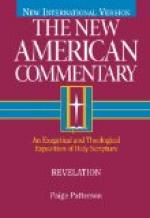These cannot be substituted for it—public worship, reading Christian books, bring a different class of feelings altogether into play.
They are not to be excluded by it. They find their true foundation in it. A tree’s branches stretch to the same circumference as its roots.
5. What is the special need of this precept for this age?
It is neglected in our modern life. The evils of our modern Christianity, the low tone of religion, the small grasp of Christian truth, the irreligious cast of religious work.
The thought of being alone with God will be a joy—or a terror.
THE STRUCTURE OF THE LORD’S PRAYER
’After this manner therefore pray ye.’—MATT. vi. 9.
‘After this manner’ may or may not imply that Christ meant this prayer to be a form, but He certainly meant it for a model. And they who drink in its spirit, and pray, seeking God’s glory before their own satisfaction, and, while trustfully asking from His hand their daily bread, rise quickly to implore the supply of their spiritual hunger, do pray after this manner,’ whether they use these words or no.
All begins with the recognition of the Fatherhood of God. The clear and fixed contemplation of God is the beginning of all true prayer, and that contemplation does not fasten on His remote and partially intelligible attributes, nor strive to climb to behold Him as in Himself, but grasps Him as related to us. The Fatherhood of God implies His communication of life, His tenderness, and our kindred. This is the prayer of the children of the kingdom, and can only be truly offered by those who, by faith in the Son, have received the adoption of sons. It gathers all such into a family, so delivering their prayer from selfish absorption in their own joys or needs. As our Father ‘in Heaven,’ He is lifted clear above earth’s limitations, changes, and imperfections. So childlike familiarity is sublimed into reverence, our hearts are drawn upward, and freed from the oppressive and narrowing attachment to earth and sense.
The perfect sevenfold petitions of the prayer fall into two halves, corresponding roughly to the first and second tables of the decalogue. The first half consists of three petitions, which refer to God and His kingdom. They are three, in accordance with the symbolism of numbers which, in the Old Testament, always regards three as the sacred number of completeness and of divinity. The second half consists of four petitions, which refer to ourselves. They are four—the number which symbolises the creature. The lessons taught by the order in which these two halves occur do not need to be dwelt upon. God first and man second, His glory before our wants—that is the true order. For how few of us is it the spontaneous order! Do we first rise to God, and only secondly descend to ourselves?




